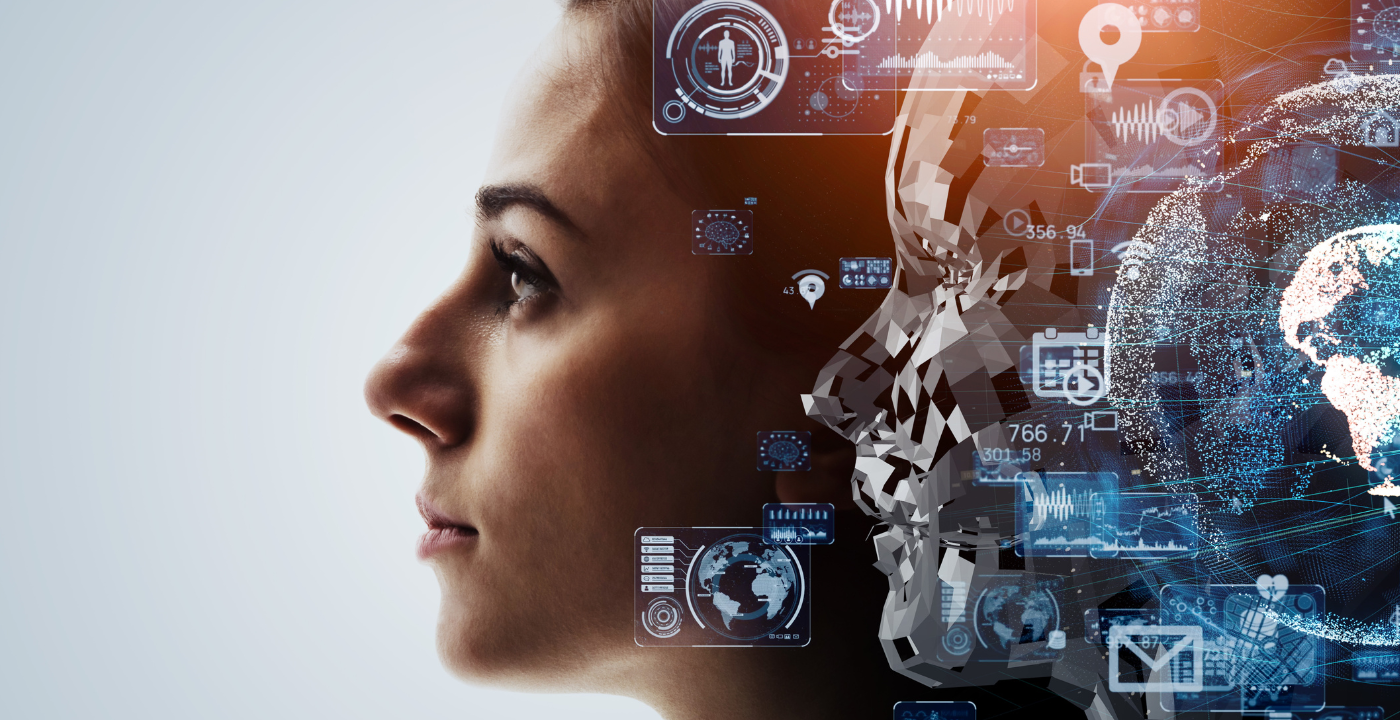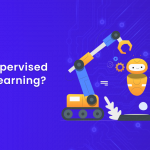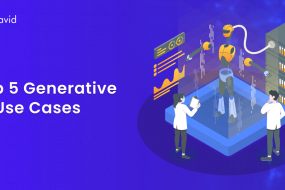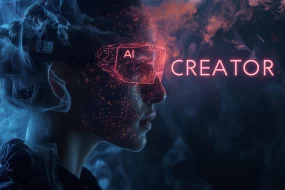
Artificial Intelligence (AI) has rapidly transformed various industries, and one of its most intriguing applications is generative AI. This technology has gained significant attention for its ability to create, generate, and mimic human-like content, ranging from text to images and even music. In this comprehensive guide, we’ll delve into the various applications of generative AI and explore how it is being used across different domains.
I. Introduction to Generative AI
A. Understanding Generative AI
Generative AI refers to a subset of artificial intelligence that focuses on creating new content rather than analyzing existing data or making predictions based on historical information. Unlike traditional AI systems that rely on predefined rules and datasets, generative AI utilizes deep learning algorithms to generate novel outputs autonomously.
B. Evolution of Generative AI
Generative AI has undergone significant evolution in recent years, fueled by advancements in deep learning, neural networks, and natural language processing (NLP). Early generative models, such as Markov chains and Hidden Markov Models (HMMs), paved the way for more sophisticated approaches like Generative Adversarial Networks (GANs) and Variational Autoencoders (VAEs).
C. Key Characteristics of Generative AI
Generative AI models exhibit several key characteristics, including creativity, diversity, and adaptability. These models have the ability to produce a wide range of outputs that closely resemble human-generated content, making them valuable tools for various applications.
II. Applications of Generative AI
A. Text Generation
Generative AI has revolutionized the field of natural language processing (NLP) by enabling machines to generate human-like text. Text generation models, such as OpenAI’s GPT (Generative Pre-trained Transformer) series, are capable of producing coherent and contextually relevant text based on input prompts. Applications of text generation include:
- Content Creation: Generative AI can assist writers, journalists, and content creators by generating article summaries, product descriptions, and even entire blog posts.
- Dialogue Systems: Chatbots and virtual assistants leverage generative AI to engage in natural language conversations with users, providing personalized assistance and support.
- Language Translation: Generative AI models can translate text between languages, enabling cross-lingual communication and localization of content.
B. Image Generation
Generative AI has also made significant strides in the field of computer vision, allowing machines to generate realistic images from scratch or modify existing ones. Image generation models, such as StyleGAN and BigGAN, are capable of creating high-resolution images with remarkable detail and fidelity. Applications of image generation include:
- Art and Design: Generative AI can be used to create digital artwork, illustrations, and designs for various purposes, including advertising, branding, and entertainment.
- Virtual Environments: Virtual reality (VR) and augmented reality (AR) applications leverage generative AI to generate realistic environments, characters, and objects for immersive experiences.
- Medical Imaging: Generative AI models are utilized in medical imaging applications to generate synthetic images for training and augmenting datasets, facilitating research and diagnosis.
C. Music Generation
Generative AI has ventured into the realm of music composition, enabling machines to create original compositions and melodies. Music generation models, such as MuseNet and Magenta’s MusicVAE, can generate music in various genres and styles, mimicking the creativity and expression of human composers. Applications of music generation include:
- Composition Assistance: Generative AI can assist musicians and composers by generating melodies, chord progressions, and harmonies, serving as a source of inspiration and creativity.
- Production Tools: Music production software and digital audio workstations (DAWs) integrate generative AI features for generating beats, loops, and arrangements, enhancing the music production process.
- Personalized Music Recommendations: Streaming platforms leverage generative AI to create personalized playlists and recommendations based on users’ listening preferences and behavior.
D. Video Generation
Generative AI has extended its capabilities to video generation, enabling machines to create dynamic visual content and animations. Video generation models, such as VQ-VAE-2 and Deep Video Portraits, can synthesize realistic videos with human-like motion and appearance. Applications of video generation include:
- Video Editing: Generative AI can assist video editors by generating transitions, visual effects, and animations to enhance the overall quality and appeal of videos.
- Character Animation: Animation studios leverage generative AI to create lifelike characters with realistic movement, facial expressions, and gestures for films, games, and virtual worlds.
- Deepfakes and Visual Effects: While controversial, generative AI has been used to create deepfake videos and special effects for entertainment and digital media production, raising ethical concerns regarding misinformation and manipulation.
III. Advancements and Challenges in Generative AI
A. Recent Advancements
Generative AI continues to advance rapidly, driven by ongoing research and innovation in machine learning and artificial intelligence. Recent advancements include:
- Improved Model Architectures: Researchers are developing increasingly sophisticated generative models with enhanced capabilities in terms of creativity, realism, and scalability.
- Transfer Learning and Fine-tuning: Transfer learning techniques allow generative AI models to leverage pre-trained knowledge and adapt to new tasks and domains with minimal additional training.
- Ethical and Responsible AI: There is growing emphasis on ethical considerations and responsible use of generative AI to mitigate potential risks and negative impacts, such as bias, misinformation, and privacy violations.
B. Challenges and Limitations
Despite its potential, generative AI faces several challenges and limitations that must be addressed:
- Data Quality and Diversity: Generative AI models require large and diverse datasets to learn from, posing challenges in obtaining high-quality training data and addressing biases and limitations.
- Control and Interpretability: Controlling the output of generative AI models and interpreting their decision-making processes remains a challenge, especially in applications where transparency and accountability are crucial.
- Ethical and Societal Implications: Generative AI raises ethical concerns related to intellectual property rights, privacy, security, and the potential misuse of AI-generated content for malicious purposes.
IV. Future Directions and Opportunities
A. Emerging Trends
The future of generative AI holds promise for various emerging trends and opportunities:
- Multimodal Generative Models: Researchers are exploring multimodal generative models that can generate content across multiple modalities, such as text, images, and audio, enabling more immersive and interactive experiences.
- Interactive and Adaptive Systems: Generative AI systems are evolving towards greater interactivity and adaptability, allowing users to provide feedback and guidance to influence the output in real-time.
- Collaborative Creativity: Generative AI has the potential to facilitate collaboration between humans and machines in creative endeavors, enabling new forms of artistic expression and innovation.
B. Applications Across Industries
Generative AI, a subset of artificial intelligence (AI), is a powerful technology that excels in creating new content, data, or information based on patterns and knowledge it has learned from existing data. Its versatility has led to a wide range of applications across various industries. Here are some of the key uses of generative AI:
1. Natural Language Generation (NLG)
It, such as GPT (Generative Pre-trained Transformer) models, can generate human-like text. NLG applications include:
- Content Creation: Automated content generation for articles, product descriptions, and reports.
- Chatbots: Conversational AI that responds to user queries with coherent and contextually relevant text.
- Language Translation: Real-time language translation services.
2. Image and Video Generation
Generative Adversarial Networks (GANs) are commonly used for creating images and videos:
- Art and Design: Creating digital art, graphics, and designs.
- Deepfakes: Generating realistic but fake images or videos, which can have both creative and malicious uses.
- Video Game Design: Generating characters, environments, and assets for video games.
3. Data Augmentation Of Generative AI
It can help generate additional data for training machine learning models:
- Data Synthesis: Creating synthetic data that resembles real-world data, which can be valuable for machine learning applications when real data is limited.
- Data Anonymization: Generating privacy-preserving versions of sensitive data for research and analysis.
4. Creative Content
It can assist in creative tasks:
- Music Composition: Creating original music compositions.
- Poetry and Literature: Generating poems, stories, or literature.
- Artistic Projects: Assisting artists and designers in generating novel concepts and artwork.
5. Simulation and Modeling
Generative AI can be used in scientific and engineering applications:
- Weather Forecasting: Creating realistic weather simulations.
- Drug Discovery: Generating molecular structures and simulating drug interactions.
- Astronomy: Simulating celestial objects and phenomena for research and education.
6. Entertainment and Media
The entertainment industry employs generative AI for various purposes:
- Personalized Recommendations: Recommending movies, music, books, and content based on user preferences.
- Content Enhancement: Improving image quality, upscaling video resolution, and enhancing audio.
7. Design and Architecture
Generative AI aids in architectural and design processes:
- Architectural Design: Generating architectural plans and layouts.
- Product Design: Creating product prototypes and designs.
8. Healthcare and Medical Imaging
Generative AI is used for medical applications:
- Medical Image Generation: Generating synthetic medical images for training diagnostic algorithms.
- Drug Discovery: Assisting in molecule generation and drug design.
9. Gaming and Virtual Worlds
Generative AI enhances gaming and virtual environments:
- Procedural Content Generation: Creating game levels, maps, and terrain.
- Non-Player Characters (NPCs): Generating AI-driven characters with realistic behavior and dialogues.
10. Language and Code Generation
Generative AI can automate language and code generation:
- Code Autocompletion: Assisting developers in writing code more efficiently.
- Natural Language Code: Converting natural language descriptions into code.
11. Financial Analysis
In finance, generative AI can assist in predicting market trends and simulating financial scenarios.
- Market Analysis: Generating financial models and scenarios for decision-making.
- Risk Assessment: Evaluating financial risks and creating simulations.
12. Virtual Assistants and Humanoid Robots
Generative AI can power virtual assistants and humanoid robots:
- Conversational Agents: Engaging in human-like conversations and providing assistance.
- Robotic Behaviors: Generating behaviors and responses for robots in human-robot interactions.
Generative AI continues to evolve and find new applications as technology advances. Its ability to create content and data in a human-like manner offers significant advantages across multiple industries, from automation and creativity to research and problem-solving.
V. Ethical Considerations and Responsible Use
A. Addressing Bias and Fairness
Generative AI models are susceptible to biases present in training data, which can perpetuate existing inequalities and stereotypes. It’s essential to implement strategies for mitigating bias and promoting fairness in AI-generated content, such as diverse dataset curation, algorithmic transparency, and fairness-aware training techniques.
B. Protecting Privacy and Security
Generative AI raises concerns regarding privacy and security, particularly with the potential for generating synthetic media that can be used for malicious purposes, such as identity theft, misinformation, and social engineering attacks. Robust privacy-preserving techniques and safeguards must be implemented to protect individuals’ privacy and prevent misuse of AI-generated content.
C. Ensuring Accountability and Transparency
As generative AI becomes more pervasive, ensuring accountability and transparency in AI-generated content is paramount. Users should have visibility into how AI models generate content and be able to trace the origins of AI-generated artifacts. Additionally, mechanisms for attributing authorship and ownership of AI-generated content can help establish accountability and prevent plagiarism and intellectual property disputes.
VI. Conclusion
Generative AI represents a paradigm shift in artificial intelligence, enabling machines to generate creative and human-like content across various domains. From text and images to music and videos, generative AI has demonstrated remarkable capabilities in creating novel and compelling outputs. As the technology continues to evolve, it holds immense potential to drive innovation, transform industries, and enrich human creativity.








